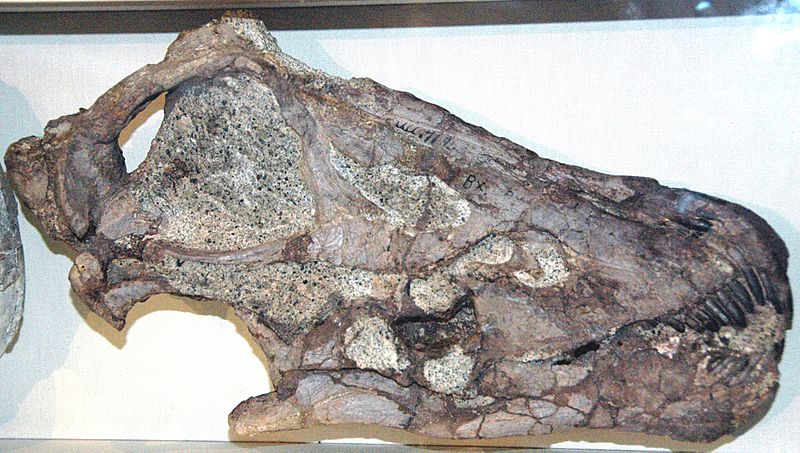Image: Diplodocus skull, DNM

Description: Diplodocus sp. (or Diplodocinae indet., or Barosaurus) juvenile sauropod dinosaur skull (29.2 cm long) from the Jurassic of Utah, USA (public display, CM 11255, Carnegie Museum of Natural History, Pittsburgh, Pennsylvania, USA). This remarkable, complete, juvenlle Diplodocus skull was described in Whitlock et al. (2010). This specimen cannot be identified with certainty to the species level, as it was not associated with post-cranial skeletal elements. Classification: Animalia, Chordata, Vertebrata, Dinosauria, Sauropodomorpha, Diplodocidae Stratigraphy: Brushy Basin Member, Morrison Formation, Upper Jurassic, 151 Ma Locality: Carnegie Quarry, Dinosaur National Monument, northeastern Utah, USA Reference cited: Whitlock, J.A., J.A. Wilson & M.C. Lamanna. 2010. Description of a nearly complete juvenile skull of Diplodocus (Sauropoda: Diplodocoidea) from the Late Jurassic of North America. Journal of Vertebrate Paleontology 30: 442-457. Sauropod dinosaurs were the largest terrestrial animals ever. They all have the same basic body plan: large body with four walking legs, very long neck & tail, and a small head relative to body size. Sauropods were herbivores, and are often perceived as holding their heads & necks up high to reach vegetation normally out of reach to other organisms. Modern reconstructions of many sauropod species depict them with heads and necks held close to the horizontal, or at low angles above the horizontal.
Title: Diplodocus skull, DNM
Credit: Diplodocus sauropod dinosaur (Morrison Formation, Upper Jurassic; Carnegie Quarry, Dinosaur National Monument, northeastern Utah) 1
Author: James St. John
Usage Terms: Creative Commons Attribution 2.0
License: CC BY 2.0
License Link: http://creativecommons.org/licenses/by/2.0
Attribution Required?: Yes
Image usage
The following page links to this image:

